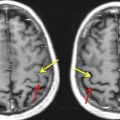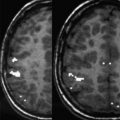It is difficult to justify maintaining a clinical functional magnetic resonance imaging (fMRI) program based solely on revenue generation. The use of fMRI is, therefore, based mostly in patient care considerations, leading to better outcomes. The high costs of the top-of-the-line equipment, hardware, and software needed for state-of-the-art fMRI and the time commitment by multiple professionals are not adequately reimbursed at a representative rate by current payor schemes for the Current Procedure Terminology codes assigned.
Key points
- •
Given the time commitment and hardware and software costs of performing high-quality functional magnetic resonance imaging (fMRI) studies, reimbursement by insurers is unlikely to recoup costs.
- •
The sophistication of the fMRI setup and paradigms used may vary widely, as will costs of equipment to perform and analyze fMRI studies.
- •
Performing fMRI studies is “valued” based on its benefits for patient care and outcomes related to neurosurgery.
- •
Research fMRI programs may fund the resources needed through large/shared instrumentation grants.
Introduction
Creating a viable functional magnetic resonance imaging (fMRI) service requires a significant investment in infrastructure, hardware, and software, whether for a clinical service or for a research enterprise. Because of the duration of the overall examination needed to create the necessary anatomic and functional studies, devising a service that yields sufficient revenue to create a profitable endeavor is often challenging. Put into the context of a brain tumor surgery service line, however, it is a valuable commodity. Many patient customers are now savvy enough to ask for, and possibly even demand, functional imaging as part of their preoperative paradigm, particularly for parenchymal masses in the frontal, temporal, and parietal lobes.
To understand the financials associated with a clinical fMRI service, one must understand the process by which relative value units (RVUs) were assigned to fMRI, the expected reimbursement for patient care cases, and the expenses required to create a comprehensive clinical service. A research service may be supported by grants that help to offset the initial and maintenance costs. The payment for time on a research magnet may be adjusted based on the need to offset these expenses and National Institutes of Health guidelines.
Introduction
Creating a viable functional magnetic resonance imaging (fMRI) service requires a significant investment in infrastructure, hardware, and software, whether for a clinical service or for a research enterprise. Because of the duration of the overall examination needed to create the necessary anatomic and functional studies, devising a service that yields sufficient revenue to create a profitable endeavor is often challenging. Put into the context of a brain tumor surgery service line, however, it is a valuable commodity. Many patient customers are now savvy enough to ask for, and possibly even demand, functional imaging as part of their preoperative paradigm, particularly for parenchymal masses in the frontal, temporal, and parietal lobes.
To understand the financials associated with a clinical fMRI service, one must understand the process by which relative value units (RVUs) were assigned to fMRI, the expected reimbursement for patient care cases, and the expenses required to create a comprehensive clinical service. A research service may be supported by grants that help to offset the initial and maintenance costs. The payment for time on a research magnet may be adjusted based on the need to offset these expenses and National Institutes of Health guidelines.
Valuation of functional MRI: The resource-based relative value scale system
The resource-based relative value scale system was implemented by the Centers for Medicare and Medicaid Services in 1992 and replaced the system previously utilized based on usual, customary and reasonable charge system. Each imaging procedure is assigned a Current Procedure Terminology (CPT) code that eventually is allotted a relative value unit (RVU), which leads to monetary reimbursement. CPT codes are assigned by the American Medical Association (AMA) through its CPT Editorial Panel and CPT Advisory Committee. The CPT Editorial Panel consists of 17 members who are nominated by the National Medical Specialty Societies, Blue Cross and Blue Shield Association, the America’s Health Insurance Plans, the American Hospital Association, and the Centers for Medicare and Medicaid Services and approved by the AMA Board of Trustees. The panel is responsible for maintaining, revising, updating, and modifying the CPT code set. The CPT Advisory Committee comprises physicians associated with AMA House of Delegate societies and advises the CPT Editorial Panel on correct procedural descriptions for coding and RVU valuations.
The AMA staff first review coding suggestions proposed by its members ( Box 1 ). The request is referred to the CPT Advisory Committee, which may rule that a new code is not needed because the procedure is similar to another or it may pass the proposal on to the CPT Editorial Panel.
- 1.
A new procedure, technology, or performance measurement is introduced.
- 2.
The new item does not fit into an existing code.
- 3.
A coding request form is submitted.
- 4.
AMA staff review the coding suggestion.
- 5.
If it is a new request the CPT Advisory Committee reviews it.
- 6.
If the CPT Advisory Committee decides a new code is not needed the AMA staff inform the requestor and inform them on how to use existing codes to report the procedure.
- 7.
If the CPT Advisory Committee agrees a change should be made it is then referred to the CPT Editorial Panel.
- 8.
The CPT Editorial Panel can result in 3 outcomes:
- i.
Add new code or revise existing nomenclature,
- ii.
Postpone/table an item to obtain further information, or
- iii.
Reject an item.
- i.
- 9.
If the request is rejected the requestor could appeal the rule.
- 10.
To appeal, the AMA must receive a written request that contains the reasons why the CPT Editorial Panel’s decision was incorrect. This must be done within 1 year of the initial request.
- 11.
When the appeal is submitted, it goes to the CPT executive committee for review.
The AMA formed the AMA/Specialty Society Relative Value Scale Update Committee (commonly known as the “RUC”) to act as an expert panel to provide consultation to Centers for Medicare and Medicaid Services for assigning RVUs to CPT codes that the Editorial Panel creates. The RUC represents the entire medical profession with 21 of its 31 members appointed by specialties recognized by the American Board of Medical Specialties, more heavily weighted toward those specialties engaging in patient care, and those specialties with higher percentages of Medicare expenditures. The RUC process is outlined in Box 2 and Fig. 1 .
- 1.
The CPT Editorial Panel’s new or revised codes and CMS requests to review existing codes are sent to the RUC staff.
- 2.
Members of the RUC Advisory Committee and specialty society staff review the summary and indicate their societies’ level of interest in developing a relative value recommendation.
- 3.
Subspecialty societies choose to (1) survey their members to obtain data on the amount of work involved in a service and develop recommendations based on the survey results, (2) comment in writing on recommendations developed by other societies, or (3) take no action.
- 4.
AMA staff distributes survey instruments for the specialty societies.
- 5.
Subspecialty societies survey at least 30 practicing physicians. Physicians receiving the survey are asked to evaluate the work involved in the new or revised code relative to the reference as the Harvard resource-based relative value scale study.
- 6.
The specialty RVS committees conduct the surveys, review the results, and prepare their recommendations to the RUC.
- 7.
The written recommendations are disseminated to the RUC before the meeting and consist of physician work, time, and practice expense recommendations.
- 8.
The specialty advisors present and defend the recommendations at the RUC meeting.
- 9.
The RUC may decide to adopt a specialty society’s recommendation, refer it back to the specialty society, or modify it before submitting it to CMS. Final recommendations to CMS must be adopted by a two-thirds majority of the RUC members.
- 10.
The RUC’s recommendations are forwarded to CMS in May of each year.
- 11.
The Medicare Physician Payment Schedule, which includes CMS’s review of the RUC recommendations, is published in the late fall. CMS’s acceptance rate for the RUC’s recommendations is typically more than 90% annually
Abbreviation: CMS, Centers for Medicare and Medicaid Services.
Professional Fees
The resource-based relative value scale system bases the physician professional RVUs on:
| 1 | Physician work | 55% of overall value on average |
| 2 | Practice expense | 42% of overall value on average |
| 3 | Malpractice expense | 3% of overall value on average |
Stay updated, free articles. Join our Telegram channel

Full access? Get Clinical Tree






